Methyl 2-Amino-4-[1-(tert-butoxycarbonyl)azetidin-3-yl]-1,3-selenazole-5-carboxylate
Abstract
1. Introduction
2. Results and Discussion
3. Materials and Methods
3.1. General
3.2. Synthesis
4. Conclusions
Supplementary Materials
Author Contributions
Funding
Conflicts of Interest
References
- Tinggi, U. Selenium: Its role as antioxidant in human health. Environ. Health Prev. Med. 2008, 13, 102–108. [Google Scholar] [CrossRef] [PubMed]
- Nogueira, C.W.; Zeni, G.; Rocha, J.B.T. Organoselenium and organotellurium compounds: Toxicology and pharmacology. Chem. Rev. 2004, 104, 6255–6285. [Google Scholar] [CrossRef] [PubMed]
- Qiao, J.; Liu, Y.; Du, Y. Method to build 2,4-substituted selenazole from β-azido diselenide and carboxylic acid: A formal synthesis of selenazofurin. Tetrahedron 2018, 74, 3061–3068. [Google Scholar] [CrossRef]
- van der Goot, H.; Eriks, J.C.; Leurs, R.; Timmerman, H. Amselamine, a new selective histamine H2-receptor agonist. Bioorg. Med. Chem. Lett. 1994, 4, 1913–1916. [Google Scholar] [CrossRef]
- Sarma, B.K.; Mugesh, G. Glutathione peroxidase (GPx)-like antioxidant activity of the organoselenium drug ebselen: Unexpected complications with thiol exchange reactions. J. Am. Chem. Soc. 2005, 127, 11477–11485. [Google Scholar] [CrossRef] [PubMed]
- Angeli, A.; Trallori, E.; Ferraroni, M.; Mannelli, L.D.C.; Ghelardini, C.; Supuran, C.T. Discovery of new 2, 5-disubstituted 1,3-selenazoles as selective human carbonic anhydrase IX inhibitors with potent anti-tumor activity. Eur. J. Med. Chem. 2018, 157, 1214–1222. [Google Scholar] [CrossRef] [PubMed]
- Ninomiya, M.; Garud, D.R.; Koketsu, M. Biologically significant selenium-containing heterocycles. Coord. Chem. Rev. 2011, 255, 2968–2990. [Google Scholar] [CrossRef]
- Brandi, A.; Cicchi, S.; Cordero, F.M. Novel syntheses of azetidines and azetidinones. Chem. Rev. 2008, 108, 3988–4035. [Google Scholar] [CrossRef] [PubMed]
- Faust, M.R.; Höfner, G.; Pabel, J.; Wanner, K.T. Azetidine derivatives as novel γ-aminobutyric acid uptake inhibitors: Synthesis, biological evaluation, and structure-activity relationship. Eur. J. Med. Chem. 2010, 45, 2453–2466. [Google Scholar] [CrossRef] [PubMed]
- Sada, T.; Saito, H. Pharmacological profiles and clinical effects of azelnidipine, a long-acting calcium channel blocker. Folia Pharmacol. Jpn. 2003, 122, 539–547. [Google Scholar] [CrossRef] [PubMed]
- Malinauskienė, V.; Dzedulionytė, K.; Bieliauskas, A.; Burinskas, S.; Sløk, F.A.; Šačkus, A. L-Proline and related chiral heterocyclic amino acids as scaffolds for the synthesis of functionalized 2-amino-1,3-selenazole-5-carboxylates. Chem. Heterocycl. Compd. 2018, 54, 469–473. [Google Scholar] [CrossRef]
- Iškauskienė, M.; Ragaitė, G.; Sløk, F.A.; Šačkus, A. Facile synthesis of novel amino acid-like building blocks by N-alkylation of heterocyclic carboxylates with N-Boc-3-iodoazetidine. Mol. Divers. 2020, 24, 1235–1251. [Google Scholar] [CrossRef] [PubMed]
- Žukauskaitė, A.; Mangelinckx, S.; Buinauskaitė, V.; Šačkus, A.; De Kimpe, N. Synthesis of new functionalized aziridine-2- and azetidine-3-carboxylic acid derivatives of potential interest for biological and foldameric applications. Amino Acids 2011, 41, 541–558. [Google Scholar] [CrossRef] [PubMed]
- Mangelinckx, S.; Žukauskaitė, A.; Buinauskaitė, V.; Šačkus, A.; De Kimpe, N. Synthesis of alkyl 2-(bromomethyl)aziridine-2-carboxylates and alkyl 3-bromoazetidine-3-carboxylates as amino acid building blocks. Tetrahedron Lett. 2008, 49, 6896–6900. [Google Scholar] [CrossRef]
- Facchinetti, V.; Avellar, M.M.; Nery, A.C.S.; Gomes, C.R.B.; Vasconcelos, T.R.A.; De Souza, M.V.N. An Eco-friendly, Hantzsch-Based, Solvent-Free Approach to 2-Aminothiazoles and 2-Aminoselenazoles. Synthesis 2016, 48, 437–440. [Google Scholar] [CrossRef]
- Kuarm, B.S.; Rajitha, B. Xanthan sulfuric acid: An efficient, biosupported, and recyclable solid acid catalyst for the synthesis of 4,4-(arylmethylene)bis(1H-pyrazol-5-ols). Synth. Commun. 2012, 42, 2382–2387. [Google Scholar] [CrossRef]
- Kanapickaitė, V.; Martynaitis, V.; Šačkus, A. Facile synthesis of novel functionalized 1,3-selenazoles. Arkivoc 2009, 11, 268–276. [Google Scholar] [CrossRef]
- Duddeck, H.; Bradenahl, R.; Stefaniak, L.; Jazwinski, J.; Kamienski, B. Synthesis and multinuclear magnetic resonance investigation of some 1,3-selenazole and 1,3-selenazoline derivatives. Magn. Reson. Chem. 2001, 39, 709–713. [Google Scholar] [CrossRef]
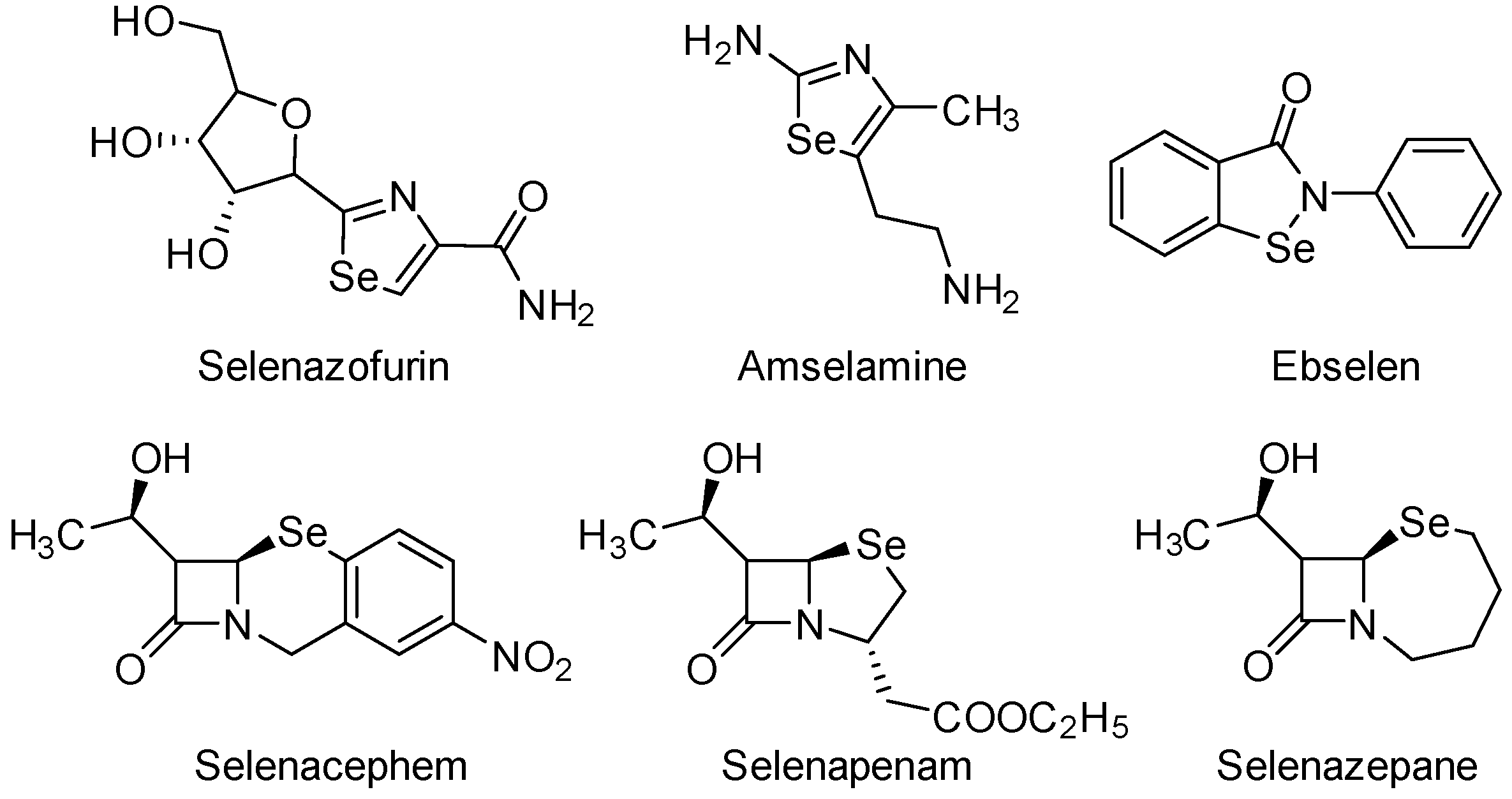
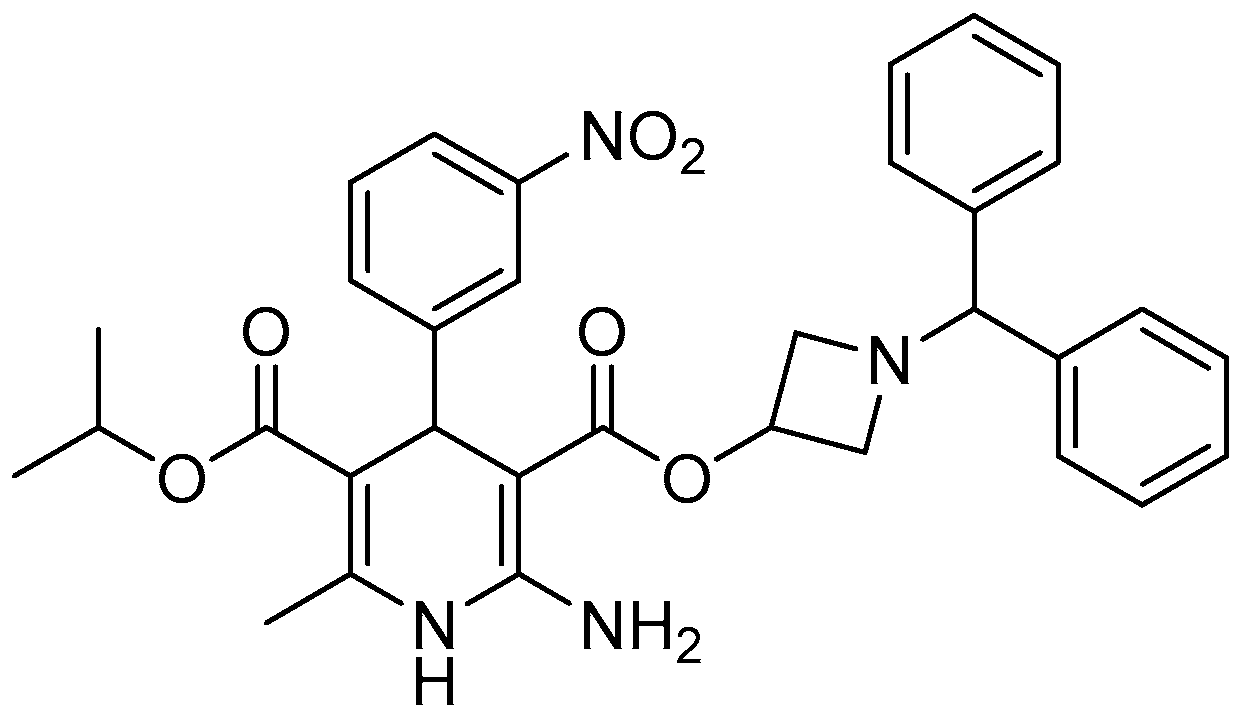
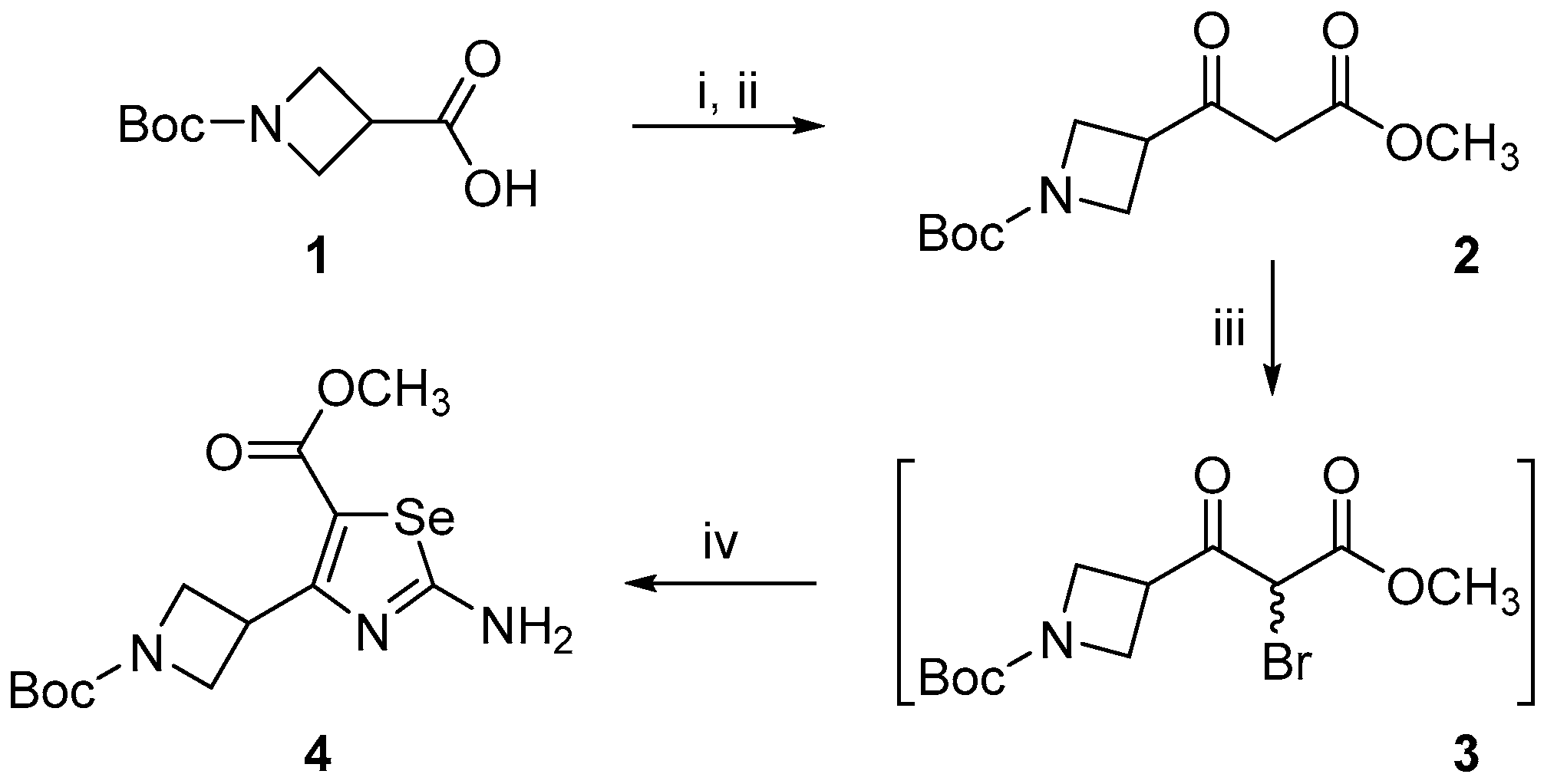
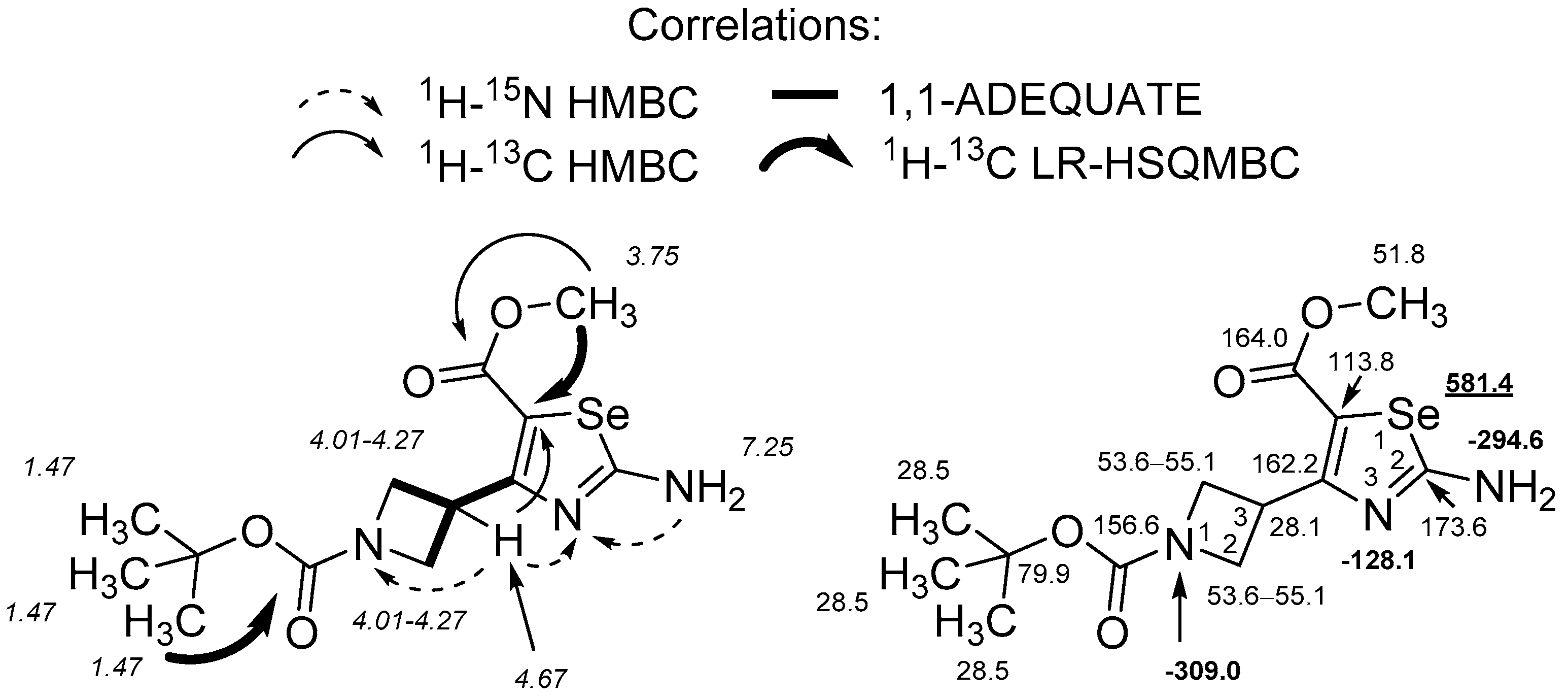
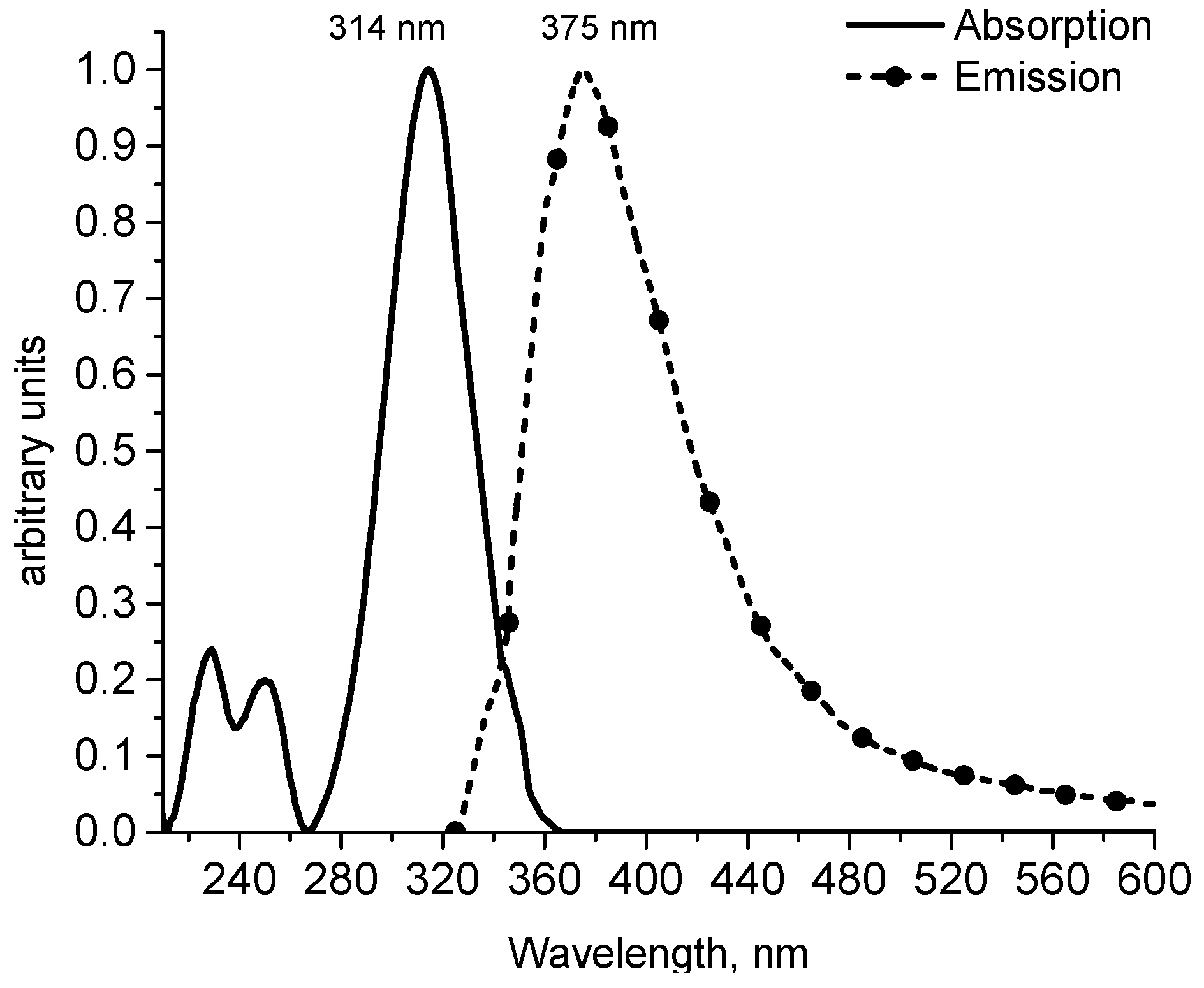
Publisher’s Note: MDPI stays neutral with regard to jurisdictional claims in published maps and institutional affiliations. |
© 2021 by the authors. Licensee MDPI, Basel, Switzerland. This article is an open access article distributed under the terms and conditions of the Creative Commons Attribution (CC BY) license (https://creativecommons.org/licenses/by/4.0/).
Share and Cite
Dzedulionytė, K.; Voznikaitė, P.; Bieliauskas, A.; Malinauskienė, V.; Sløk, F.A.; Šačkus, A. Methyl 2-Amino-4-[1-(tert-butoxycarbonyl)azetidin-3-yl]-1,3-selenazole-5-carboxylate. Molbank 2021, 2021, M1207. https://doi.org/10.3390/M1207
Dzedulionytė K, Voznikaitė P, Bieliauskas A, Malinauskienė V, Sløk FA, Šačkus A. Methyl 2-Amino-4-[1-(tert-butoxycarbonyl)azetidin-3-yl]-1,3-selenazole-5-carboxylate. Molbank. 2021; 2021(2):M1207. https://doi.org/10.3390/M1207
Chicago/Turabian StyleDzedulionytė, Karolina, Paulina Voznikaitė, Aurimas Bieliauskas, Vida Malinauskienė, Frank A. Sløk, and Algirdas Šačkus. 2021. "Methyl 2-Amino-4-[1-(tert-butoxycarbonyl)azetidin-3-yl]-1,3-selenazole-5-carboxylate" Molbank 2021, no. 2: M1207. https://doi.org/10.3390/M1207
APA StyleDzedulionytė, K., Voznikaitė, P., Bieliauskas, A., Malinauskienė, V., Sløk, F. A., & Šačkus, A. (2021). Methyl 2-Amino-4-[1-(tert-butoxycarbonyl)azetidin-3-yl]-1,3-selenazole-5-carboxylate. Molbank, 2021(2), M1207. https://doi.org/10.3390/M1207





